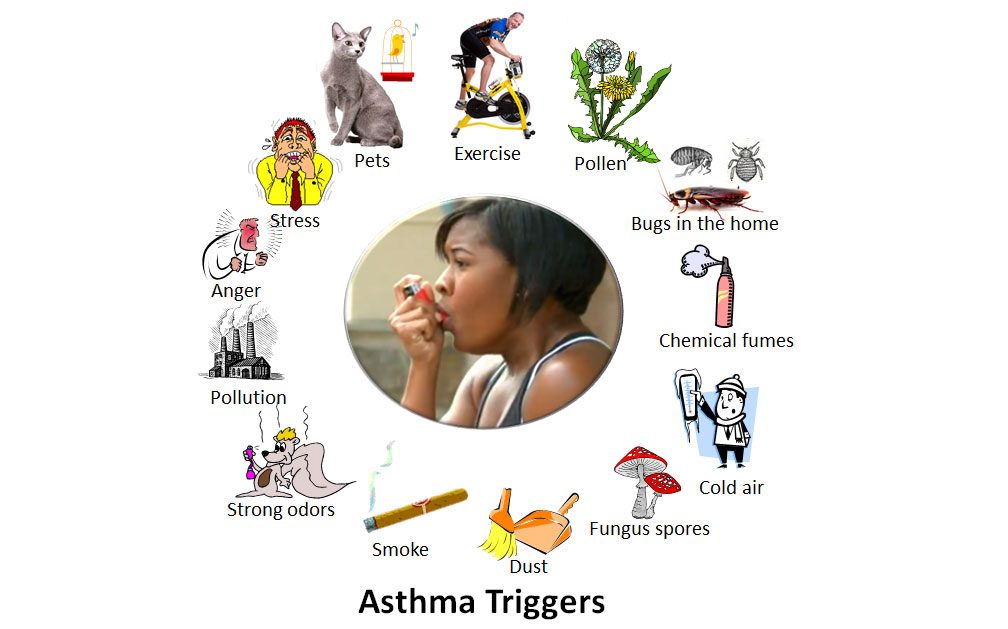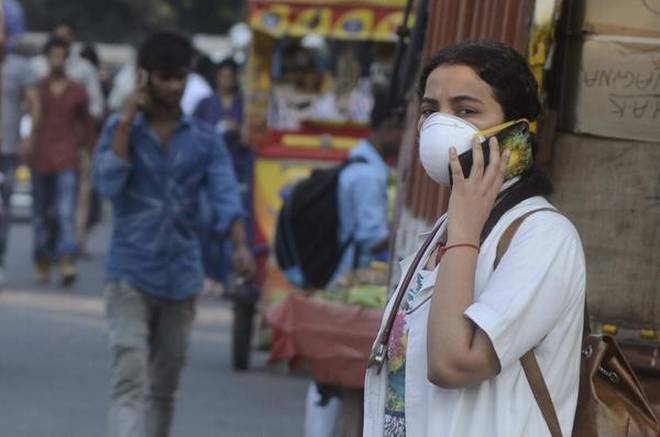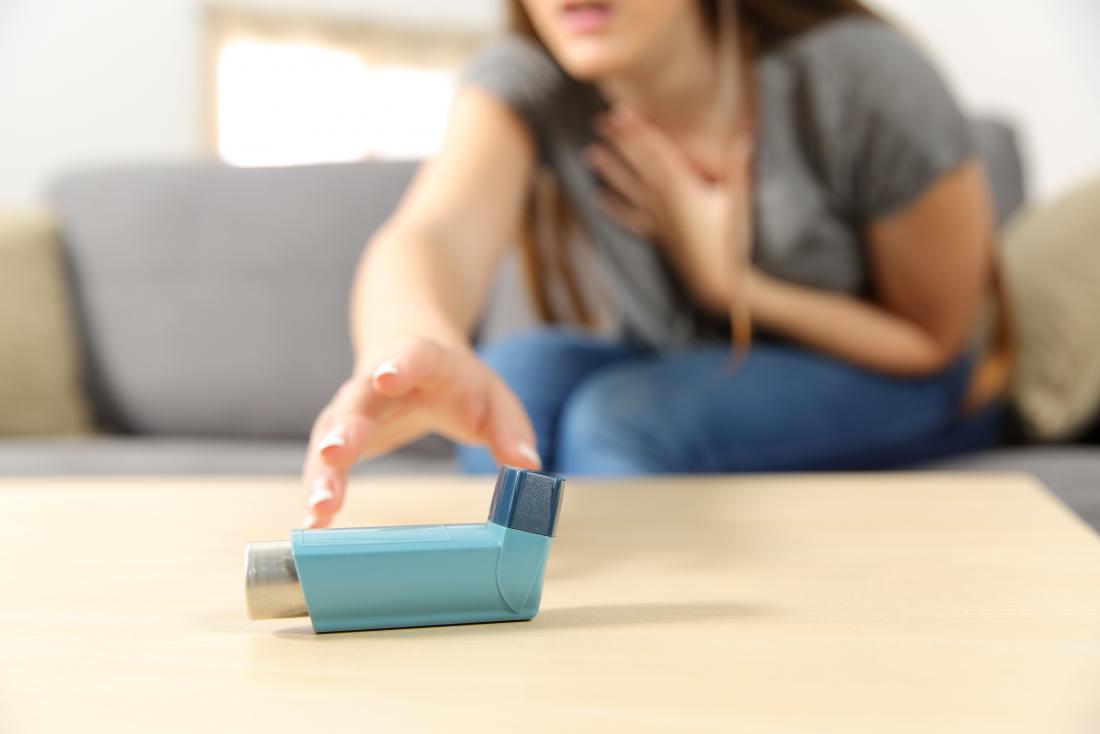
How to Control Asthma Attacks without an Inhaler At Hand
Asthma is most commonly defined as a chronic condition, implying that a person with asthma needs to continuously monitor and control it over their lifetime. What causes asthma attacks is yet to be fully determined, and there currently exists no cure. On the bright side, there are many measures that you can take to effectively control your asthma. Living a life free of asthma symptoms and asthma attacks is
possible if you have a profound understanding of your asthma, including its symptoms, triggers, precautions, medications, and management to achieve control over your asthma. You should always be ready to take responsibility, be proactive when your asthma is not in control, and be prepared for the unpredictable asthma attack.
The following are some of the things you can do to help you control your asthma in a better way
Learn To Avoid Your Triggers

It is important to pay attention to when and where your asthma symptoms show up, such as wheezing and coughing. Once you are able to accurately pinpoint the triggers that cause your asthma attacks, you will be able to avoid them.
Foods and beverages containing compounds of sulphites such as wine, beer, potatoes, shrimp and dried fruits can worsen asthma for some people. Also a few medicines, like aspirin and similar pain relievers, prescription drugs like beta-blockers or ACE inhibitors, which are common medications to control blood pressure can also worsen your asthma. If you think these drugs are triggering your asthma, it is best to consult your doctor and ask for alternative options.
Strong odours also can trigger asthma flare-ups, so it is advisable to stay away from things like perfume, hair spray, body mists, talcum powder, and other scented cosmetics. This also includes cigarette smoke, so steer clear of smokers or public smoking zones. If you are a smoker yourself, lose the habit. If you are living with someone with a smoking habit, try to get them to quit too. Even if they promise to smoke strictly outside, they will still bring the ash stench and chemicals inside the house, on their clothes and hair.
Keep Your Home Clean

Almost every house has dust mites or bugs that reside in furniture, rugs, bedding, and carpets. If you or someone you live with has asthma, breathing in the presence of these critters can make your symptoms worse. It is hard to get rid of those allergens at one go, but their numbers can be lowered significantly if you take simple precautionary measures to increase the sanitation of your personal space.
Make sure to wash your pillow covers every week in water as hot as a hundred and thirty degrees to effectively kill mites. You can also add bleach in warm water and wash them. Bedsheets, comforters and blankets should be washed on a regular basis as well. Do not keep a carpet in your bedroom, and keep an air conditioner or dehumidifier to keep the humidity of the room in check.
Regular vacuuming can also help to keep dust mites at bay but a vacuum tends to stir up ultrafine particles that may irritate your lungs. Therefore, it is more effective to use an air purifier in your homes instead.
Get Adequate Exercise

Granted that certain categories of exercises can get tougher with asthma, you should not stop yourself from exercising altogether. Regular physical activity is beneficial for the human body’s overall health, including your lungs. A recent study confirmed that people with asthma who exercise for over 30 minutes a day were almost three times more likely to have control over their asthma symptoms, than those who did not exercise at all.
If you think that intense training or running long distances puts too much strain on your body and lungs, try simpler activities such as jogging, biking, hiking, or yoga. Swimming can also be a great choice of activity for people with asthma, as the warm and moist air present in pool sides usually does not trigger symptoms.
Treat Other Medical Conditions

Asthma can feel worse, and prove to be even more dangerous, if you are dealing with more health issues, besides asthma itself. Asthma is harder to control for people suffering from illnesses like the common cold and flu, sinus infections, sleep apnoea and acid reflux diseases, than for a person with asthma who is otherwise completely healthy. Do not ignore any side symptoms that you face. Consult a doctor about treating all your symptoms, whether they have any direct linkage with your asthma or not.
You might also be having allergies which can further trigger your symptoms, such as allergies to pet dander or pollen. You should try and avoid coming in contact with those on a regular basis.
Studies reveal that stress and anxiety can also worsen the health of asthma patients. To reduce stress inducing asthma attacks symptoms, look for healthy ways to deal with your emotions – through consulting a mental health professional, support from friends and family, and/or relaxation exercises, such as meditation.
Pay Attention to Surrounding Air

Dry cold air tends to irritate your lungs. When you step outside your house during winter days, make sure to keep your mouth and nose covered with a scarf. If you start coughing or wheezing while exercising out in the park, try to hit the gym or attend an indoor workout class instead.
During allergies’ season, keep an eye on your local weather channels. Keep track of the pollen levels in the air, and stay indoors when they are substantially high. On days when the ozone or pollution levels are alarmingly high, it is advisable for people with lung diseases to spend as little time outdoors as they possibly can.
One Stop Solution

The best solution to keep your discomfort of asthma from getting worse because of dust mites, external smoke, pollens and other allergens, is to surround yourself with clean air at all times. The only way to do so is to carry an air purifier with you, everywhere you go. The AirTamer A310 is a personal, rechargeable air purifier than can be worn around the neck. With its advanced ionic technology, it emits atomic sized pollutants from your personal space, and provides you with a bubble of clean, safe air on the go.
Asthma Attacks: A Sign That Your Asthma Is Not In Good Control

An asthma attack occurs in case of bronchoconstriction, that is, when the muscles surrounding your airways constrict, and your airway passage becomes too narrow for you to keep breathing effortlessly.
You can face an asthma attack out of the blue if your asthma is not kept well controlled and you are exposed to any of your triggers. Asthma attacks may occur suddenly, or even slowly build up over hours, days, and even weeks. In order to avoid dire health consequences, it is important that you learn to recognize your triggers and symptoms of asthma, and know what to do in case of an unpredictable asthma attacks.
The symptoms of asthma have been classified according to their extent of severity as follows.
- Mild to severe (the early warning signs of an asthma attacks)
- Disrupted sleep
- Inability to exercise normally
- Reliever needed for more than four times in a week
- Decreased level of activity
If you are experiencing any of the above symptoms, it might be an indication of an asthma attack about to occur shortly. Getting timely help from your healthcare provider can prevent you from facing dangerous health consequences.
- Life-threatening
- Difficulty in speaking because of asthma
- Excessive coughing, wheezing or tightness in chest
- Having shortness of breath at rest
- Reliever failing to work
- Excessive sweating
- Lips and nail beds turning blue
- Feeling anxious or stressed
What to do in case of asthma attacks if you do not have an inhaler at hand?

Of course, the immediate response to an asthma attack would be to use your inhaler. If, however, you find yourself out of reach of an inhaler or a medical professional, there are some simple steps to be followed so as to keep the situation in control.
- Stop whatever activity you are in the middle of and sit upright. Bending over or lying down can be dangerous as those positions will constrict your breathing even more.
- Take long, deep breaths. Inhaling deeply will help to slow down the pace of your breathing and prevent hyperventilation. Breathe in slowly through your nose and breathe out through your mouth, till normal breathing is restored.
- It goes without saying, stay calm. Getting restless can cause further tightening of your chest muscles and make it even more difficult to breathe.
- Remove yourself from the proximity of the trigger. The asthma attack could have been caused by any dust, cigarette smoke or the smell of chemicals like ammonia, chlorine gas, or sulphur dioxide around you. Get as far away from the trigger as soon as possible and move into an air conditioned environment or at least somewhere with clean air.
- Have a hot caffeinated beverage. Hot coffee can help in opening up the airways slightly better, thus providing some temporary relief for an hour or two.
- These are just precautionary steps. Get hold of your inhaler as soon as possible. If the coughing, wheezing and difficulty in breathing do not subside even after a period of rest, do not wait to seek immediate medical attention.




1 comment on “How to Control Asthma Attacks without an Inhaler At Hand”